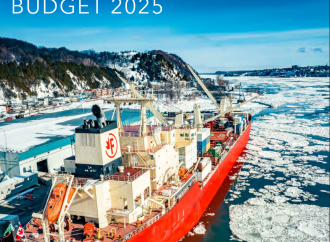Thirty-one years ago, when I began my academic career, the world witnessed the horrors of the Rwandan genocide and the massacre at Srebrenica—atrocities that echo in today’s headlines. The legal term genocide accurately describes what is happening in Gaza, confirmed by at least five expert reports, even if political leaders hesitate to use it. Yet in 1994, facing genocide, forced displacement, and ethnic cleansing elicited a profoundly different international (and Canadian) response.
On the one hand, the United States asserted its post–Cold War dominance, blocking successive United Nations (UN) Security Council efforts to deploy a preventive peacekeeping force to Rwanda. Washington’s unilateralism left Canada to act belatedly and ineffectively in Zaire, attempting to protect the refugees who had fled Rwanda’s slaughter.
On the other hand, in the decade or so that followed, international engagement focused on prevention and diplomacy. Canada became a leader in the “Responsibilities Agendas,” whole of government policy making, small arms monitoring, and preventive deployment. Bridges were built with fragile states; civil society organizations flourished at home and abroad. Canada’s diplomatic identity rested, to some extent, on proactive engagement as well as multilateralism.
However, upheavals in Haiti, the unnecessary wars in Iraq, and Afghanistan, and the events of 9/11—shifted the global agenda toward US-led interventionism and war fighting The so-called “war on terror” replaced diplomacy with force. According to Brown University’s Costs of War project, more than 940,000 people were killed directly in Iraq, Afghanistan, Syria, Yemen, and Pakistan between 2001 and 2023, including over 432,000 civilians. Indirectly, an estimated 3.6–3.8 million have died from the broader consequences of these wars. US unilateralism has proven destructive and relentless, as seen again in Washington’s unwavering support for Israel, regardless of the humanitarian cost.
The Unraveling of Canadian Independence
Since the Rwandan genocide, both the world and Canada have changed—first incrementally, then irreversibly. Under Paul Martin, Stephen Harper, Justin Trudeau, and now Mark Carney, Canada has steadily abandoned the Responsibilities Agendas and the capacities that supported them: early warning systems, conflict prevention, mediation, and partnerships with civil society.
Accusations of crimes against humanity over Ottawa’s role in the Afghan detainee scandal further eroded Canada’s credibility on the world stage. Ottawa’s once-principled support for the International Criminal Court became selective—targeting US adversaries while remaining silent when Washington threatened sanctions over ICC investigations into American war crimes in Afghanistan. Canada’s ambivalence marked a retreat from the “rule of law” order it helped build during the Cold War.
Under Justin Trudeau and his foreign ministers, Canada played no significant role at the UN. His government failed to articulate a coherent vision for Canada’s global position, and like Stephen Harper before him, lost bids for both China and India trade deals, and failed to secure a seat on the Security Council. Over the past quarter century, Canadian foreign policy has increasingly mirrored US interests—whether addressing regime change in Venezuela, Myanmar, Syria, and Iran, confronting rivals Russia and China, or implementing a shared Asia-Pacific strategy.
There are exceptions—such as Canada’s opposition to the US embargo on Cuba and recent attempts to rebuild ties with India and China—but these efforts cannot mask the erosion of independent diplomacy. As the US withdraws from or undermines key global compacts—the World Health Organization (WHO), Paris Climate Agreement, United Nations, and World Trade Organization (WTO)—Canada’s diminished autonomy leaves it struggling to fill the void.
Today, Canada’s foreign policy establishment is reduced to reacting to American priorities, particularly under an ambitious Trump agenda. As Chrystia Freeland once called the US “the indispensable nation,” Ottawa now faces the reality that its closest ally can and will inflict deep economic harm on the Canadian people.
Economic Coercion and Strategic Blindness
In the post–Cold War era, Canadian policymakers believed economic integration fostered peace. Today, economic warfare—sanctions, tariffs, and “national emergency” declarations—has replaced military confrontation as the primary tool for exerting influence and power.
Yet, over the last two decades, Ottawa failed to grasp America’s shift toward economic coercion and self-sufficiency. Under Jake Sullivan, the Biden administration embraced a statist focus on “reshoring” critical industries. Donald Trump, meanwhile, targets alliances, trade deals, and aid programs he claims disadvantage the US. Both approaches rely on declaring “national emergencies”—over 40 are currently active—to justify imposing costs on allies and adversaries alike.
These strategies have increased America’s share of G7 GDP to over 50 percent and drawn investment away from other members, including Canada. While US dominance within the G7 has grown, the bloc’s overall influence has waned compared to the BRICS nations, whose combined GDP now rivals that of the G7.
For Canada, the effects are stark. GDP per capita has declined relative to the US, and regional supply chains have deepened dependency on the US without addressing weak manufacturing or low productivity. Promises to leverage immigration for innovation have faltered as Canada fails to retain skilled STEM (Science, Technology, Engineering, and Math) graduates.
After COVID-19, Ottawa doubled down on economic alignment through “friend-shoring” and efforts to build a “Fortress North America.” In doing so, Canada ignored the multipolar realities of today’s world, tightening its dependence on an increasingly protectionist United States.
Toward a Strategic Reset
To navigate this shifting landscape, Canada’s leaders must first recognize that their policy priorities are contradictory and counterproductive, expecting somehow that trade diversification will naturally follow from a security posture that is unyielding and confrontational. In an era defined by economic coercion and geopolitical fragmentation, Canada needs confident, autonomous decision-making—not reflexive compliance with US priorities.
A genuine strategic reset requires rejecting the illusion that military spending benchmarks—whether NATO’s two or even five percent of GDP—address Canada’s structural challenges. Such targets distract from the deeper need for a foreign policy that reconciles economic, diplomatic, and security realities in a divided world where the US is neither predictable nor dominant.
For example, Canada’s growing dependence on the US has blurred the boundaries of our two country’s defence and security policies. The recent political interference report reveals a security and intelligence community that seeks alignment with American interests not only on China and Russia but also India and Iran. This is a flawed agenda that ensures Canada’s security posture mirrors Washington’s through the pretense that America’s enemies must also be ours.
Enemy and threat based thinking fuel policies that seek the “total defeat” of adversaries—strategies that demand escalation dominance, modernization of forces, and readiness for decisive conflict. Yet such doctrines heighten the risk of regional or even nuclear war. Diplomacy, when it appears, often excludes dialogue with adversaries, focusing instead on coalition-building and ideological solidarity. This zero-sum approach—rewarding conformity and moral dualism—is inherently destabilizing in a multipolar, interest-based world.
Reclaiming Diplomacy and Restraint
Military restraint offers a necessary corrective, balancing strength with peace. It requires breaking dependence on institutions entrenched in decades of failed interventions, regime change and endless wars. Achieving this transformation means first, redefining the mandates of Canada’s foreign policy machinery—diplomatic, intelligence, aid, and defence sectors—that have proven ineffective at intervention and peacebuilding alike.
Second, a flexible foreign policy must engage selectively with US-led initiatives rather than embracing them unconditionally. Canada must confront the uncomfortable truth that it operates in a world where it is often subservient to US interests—and must develop strategies to offset harmful American policies that undermine its own.
Third, overcoming Canada’s incoherent foreign, security and defence policies requires clarity, tenacity and fortitude. For example, Ottawa’s defence and security policies on China and Russia remain hardline, shaped by post-9/11 integration with the US. Few experts within Canada’s defence and security establishment offer balanced advice on how to reconcile the need for economic diversification with enemy driven defence and security agendas. Confrontation and containment are favoured over engagement and diplomacy. Meaningful public debate on reconciling this gap is largely absent in the media and institutions of higher learning.
Mark Carney and Anita Anand’s China reset is a welcome start to that debate. Yet their confrontational posture toward Russia and unconditional support for Israel suggest that Canada’s broader foreign policy remains trapped between rhetoric and reality.
If Canada is to reclaim its voice, it must rediscover the values that once defined its diplomacy—independence, restraint, and the courage to engage even when allies choose confrontation over peace.
This blog post is part of the “Canadian Security Interests and Trump 2.0” Conference.









